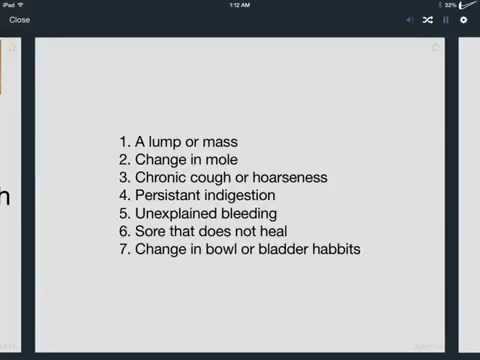What Does It Mean to Be a Medical Assistant?
Contents [show]
Being a medical assistant is a demanding but rewarding job. If you’re thinking of becoming a medical assistant, here’s what you need to know.
Checkout this video:
So, you want to be a medical assistant?
Medical assistants (MAs) are allied health professionals responsible for various administrative, clinical, and technological tasks in hospitals, physician’s offices, and other healthcare settings. They are a vital link between patients and healthcare providers and play a crucial role in ensuring the smooth functioning of healthcare facilities.
Becoming a medical assistant is a great way to start a career in the medical field without having to commit to years of schooling. MAs typically complete a short certificate or diploma program which can be completed in as little as one year. Some MAs may choose to further their education by completing an Associate’s degree program which takes two years to complete.
MAs typically have various responsibilities including but not limited to: patient intakes, taking vitals signs, drawing blood, administering injections, scheduling appointments, handling patient billing and insurance paperwork, maintaining medical records and assisting with minor office surgeries.
If you are interested in becoming a medical assistant, it is important to have excellent communication skills, be detail-oriented and organized, have strong interpersonal skills, and be able to handle multiple tasks simultaneously.
The duties of a medical assistant
Medical assistants are multi-skilled health professionals specifically trained to work in outpatient facilities such as medical offices and clinics. They perform a variety of administrative and clinical tasks to keep the office running smoothly, and they often play a vital role in providing direct patient care.
Medical assistants must be able to perform both administrative and clinical tasks, although the exact nature of their duties will vary depending on the size and type of office in which they work. In a small office, a medical assistant might be responsible for everything from scheduling appointments to handling insurance paperwork, while in a larger office, she might specialize in either administrative or clinical work. In all cases, however, she will need to be able to effectively communicate with patients, doctors, and other office staff.
Administrative duties might include answering phones, scheduling appointments, taking patient medical histories, handling insurance paperwork, and billing. Clinical duties might include taking patient vital signs (blood pressure, temperature, etc.), preparing patients for examination, assisting the doctor during examinations and procedures, performing basic laboratory tests, administering medications and injections, and instructing patients on how to care for themselves at home.
Most medical assistants have at least a high school diploma or equivalent; however, some positions may require postsecondary education or certification. Many community colleges offer medical assistant programs that last between one and two years and lead to a certificate or diploma. Some four-year colleges offer bachelor’s degree programs in health science with a concentration in medical assisting.
The training and education of a medical assistant
Medical assistants are allied health professionals responsible for various administrative, clinical, and basic laboratory duties in physician’s offices, hospitals, and other outpatient facilities. They work under the supervision of licensed physicians or registered nurses. The majority of medical assistants have postsecondary education such as a certificate or diploma from a medical assisting program. Some states have certification requirements for medical assistants.
Most medical assistants have postsecondary education such as a certificate or diploma from a medical assisting program. These programs typically take 1 to 2 years to complete and are offered by technical and community colleges, as well as some high schools. Some states have certification requirements for medical assistants.
The work environment of a medical assistant
Medical assistants are trained to work in a variety of medical settings, including doctor’s offices, clinics, hospitals, and even schools and prisons. They may work full time or part time, and their hours may vary depending on the needs of their employer. Some medical assistants work in an office setting, where they answer phones, schedule appointments, file Medical records and perform other clerical duties. Others work in a clinical setting, where they take blood pressure, prepare patients for examinations, assist with minor surgical procedures, and give injections. Medical assistants may also be responsible for ordering supplies and stocking exam rooms.
In addition to their regular duties, medical assistants may be asked to participate in community outreach programs or provide support during emergencies. They may also be asked to take on more administrative responsibilities, such as coordinating the activities of an entire medical office.
The benefits of being a medical assistant
Medical assistants are in high demand. They are important members of the healthcare team who provide support to doctors and nurses. They perform a variety of tasks, including taking medical histories, scheduling appointments, preparing patients for tests and procedures, and collecting lab specimens.
There are many reasons to become a medical assistant. It is a stable career with good job security and excellent benefits. Medical assistants earn a good salary and can often find jobs in their local area. They also have the opportunity to work in a variety of settings, such as hospitals, clinics, and doctor’s offices.
In addition to the financial benefits, medical assistants also enjoy the satisfaction of helping others. They make a difference in the lives of their patients by providing quality care and support. If you are interested in a career that is both challenging and rewarding, then consider becoming a medical assistant.
The downside of being a medical assistant
While being a medical assistant can be a rewarding career, it does have its downside. One of the biggest challenges is dealing with the emotional stress that comes with the job. Medical assistants must be able to deal with sick and injured patients on a daily basis. They might see patients who are in pain, or who are dying. This can be very emotionally demanding.
The salary of a medical assistant
Medical assistants are vital members of the healthcare team. They provide administrative and clinical support to physicians and other members of the medical team. Medical assistants perform a variety of tasks, including taking medical histories and scheduling appointments. They also may take patients’ vital signs, prepare blood samples for laboratory testing, and help patients understand their medications.
Medical assistants usually have an associate degree or certificate from a postsecondary medical assistant program. Some states require certification for certain tasks, such as taking patient vital signs. Employment of medical assistants is projected to grow 29 percent from 2019 to 2029, much faster than the average for all occupations. With the large aging baby-boom population and continued advances in medical technology, physicians will increasingly rely on medical assistants to perform routine administrative and clinical tasks so that they can see more patients.
The job outlook for medical assistants
The job outlook for medical assistants is very good. In fact, the Bureau of Labor Statistics has classified medical assisting as one of the fastest-growing occupations in the United States with an projected 29% growth in jobs between 2016 and 2026. That means that there will be an estimated 176,600 new jobs opening up in the next 10 years.
There are several reasons for this rapid growth. One is that the population is aging, and as people live longer, they will need more medical care. Also, as more people have health insurance coverage thanks to the Affordable Care Act they are using more medical services. And finally, as our economy continues to improve, people are increasingly seeking out preventive care and elective procedures that they may have put off during leaner times.
All of this is good news if you’re thinking about becoming a medical assistant. With so many new job openings expected in the coming years, it’s a great time to enter this growing field.
How to become a medical assistant
In order to become a medical assistant, there are a few steps you will need to follow. First, you will need to obtain a high school diploma or equivalent. Next, you will need to complete an accredited medical assisting program. Once you have completed your training, you will then need to pass the Certified Medical Assistant (CMA) exam administered by the American Association of Medical Assistants (AAMA). After passing the CMA exam, you will be a certified medical assistant and can begin working in the field.
FAQ’s for medical assistants
Are you thinking about becoming a medical assistant, but have some questions about the profession? You’re not alone. Here are answers to some of the most frequently asked questions about medical assisting:
What does a medical assistant do?
A medical assistant is a trained professional who works in a doctor’s office, clinic or other healthcare facility. Medical assistants perform a variety of administrative and clinical tasks, such as taking patient histories and vital signs, scheduling appointments, billing patients and handling insurance paperwork.
How do I become a medical assistant?
To become a medical assistant, you will need to complete an accredited medical assisting program. Most programs take between one and two years to complete, and offer both classroom and hands-on instruction. Once you have completed your training, you will need to pass a certification exam to earn your credential.
Where do I work as a medical assistant?
Medical assistants can find employment in a variety of settings, including doctors’ offices, hospitals, clinics and health insurance companies. Some medical assistants also choose to work as freelance professionals, providing their services to multiple clients.
What are the duties of a medical assistant?
The specific duties of a medical assistant will vary depending on the type of healthcare facility in which they work. In general, though, medical assistants are responsible for performing administrative tasks such as scheduling appointments and handling billing and insurance paperwork. They also perform clinical duties such as taking patient histories and vital signs, preparing patients for examination and assisting the physician during procedures.







